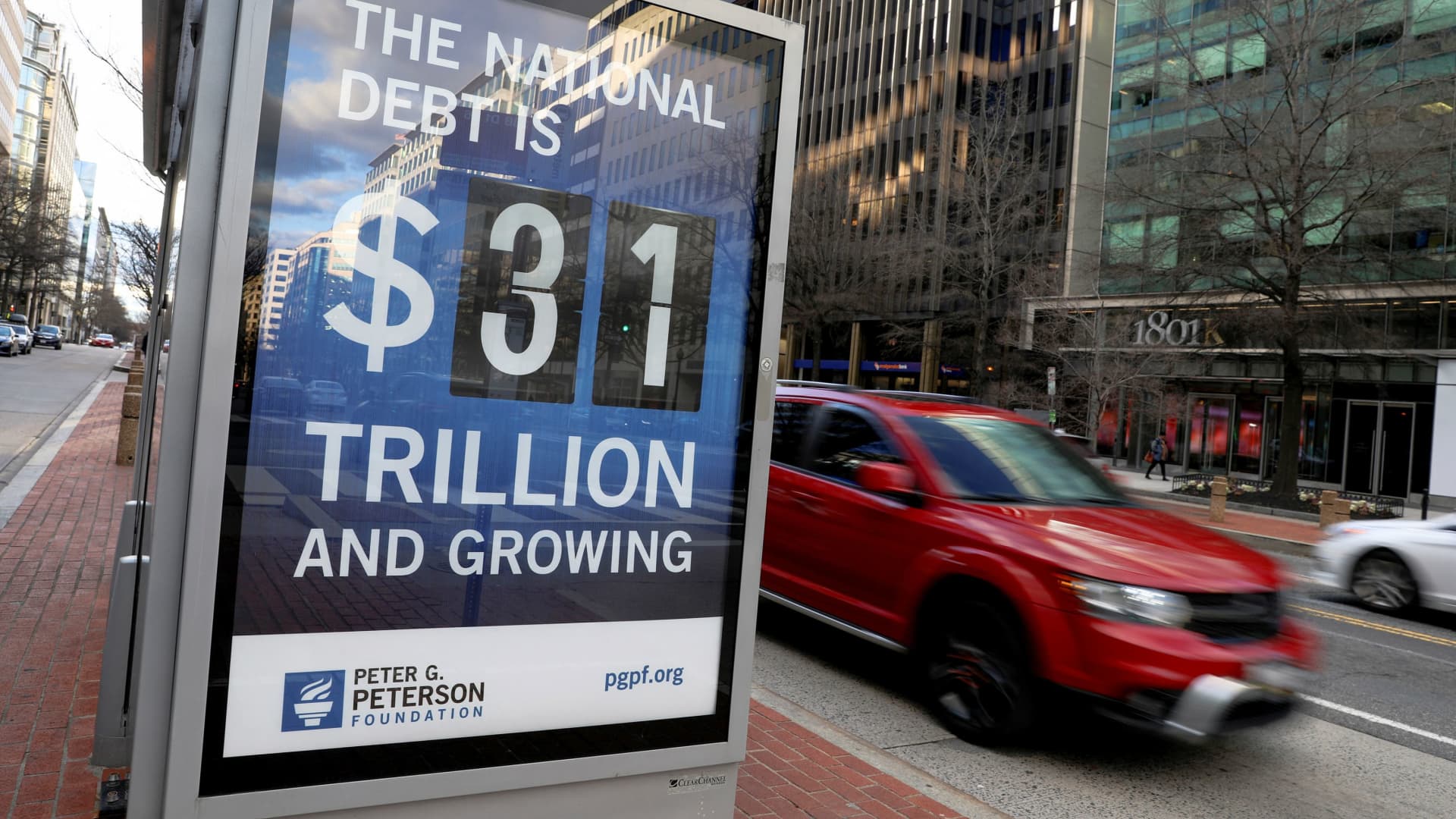WASHINGTON — The United States Treasury will exhaust its emergency measures to prevent a debt default sometime between July and September unless Congress raises the $31.4 trillion debt limit, the Congressional Budget Office projected Wednesday.
The latest projection notes that the final date will be determined by tax revenues the IRS receives in April. Should those revenues decline significantly from CBO’s estimates, “the extraordinary measures could be exhausted sooner, and Treasury could run out of funds before July,” CBO director Phillip Swagel said in a statement Wednesday.
The CBO also revised its projection for the size of the annual federal budget deficit over the next decade. The agency now believes the deficit will total $18.8 trillion over the next 10 years, a figure that is 20% higher than the agency’s estimate last May of $15.7 trillion.
The U.S. reached the current debt limit in January of this year, at which point Treasury Secretary Janet Yellen initiated a series of established steps, known as the “extraordinary measures,” that allowed the government to continue borrowing money to meet its obligations.
Should those measures be exhausted before President Joe Biden can sign off on a new debt limit passed by Congress, “the government would have to delay making payments for some activities, default on its debt obligations, or both,” said Swagel.
The CBO will release another estimate in May that takes into account the 2022 tax revenue, Swagel said at a press conference later Wednesday.
Top Republicans and Democrats on Capitol Hill have repeatedly assured the public that the United States will not default on its debt, and that an agreement will be reached and a bill passed in time to avert a crisis.
But what that legislation will look like, and precisely how it will win majorities in both the narrowly Republican-controlled House and the narrowly Democratic-controlled Senate, is anybody’s guess.
A large bloc of Republicans in the House have demanded Congress pass drastic cuts to federal spending before they will agree to vote to raise the debt limit, effectively using their leverage within the GOP to force their priorities to the front of the line.
Republicans argue that the debt limit and annual federal spending are inextricably linked, the same way household debt is a product of household spending.
But Democrats counter that the majority of every dollar spent by the government is used to fund a mandatory expense like Social Security payments or interest on the national debt, and that federal spending cannot be cut like a household budget.
The CBO estimates released Wednesday are likely to feature prominently in the coming debate over federal spending.
The CBO attributed the significant jump in the federal deficit in the next decade to several factors, including the cost of legislation passed by Congress last year, rising costs of Medicare, Social Security, veteran benefits and future interest payments on a higher national debt.
Meanwhile, the agency projected that tax revenue will not keep pace with these rising costs. And certain tax revenues are expected to fall, like those from gas taxes as more Americans drive electric vehicles.
